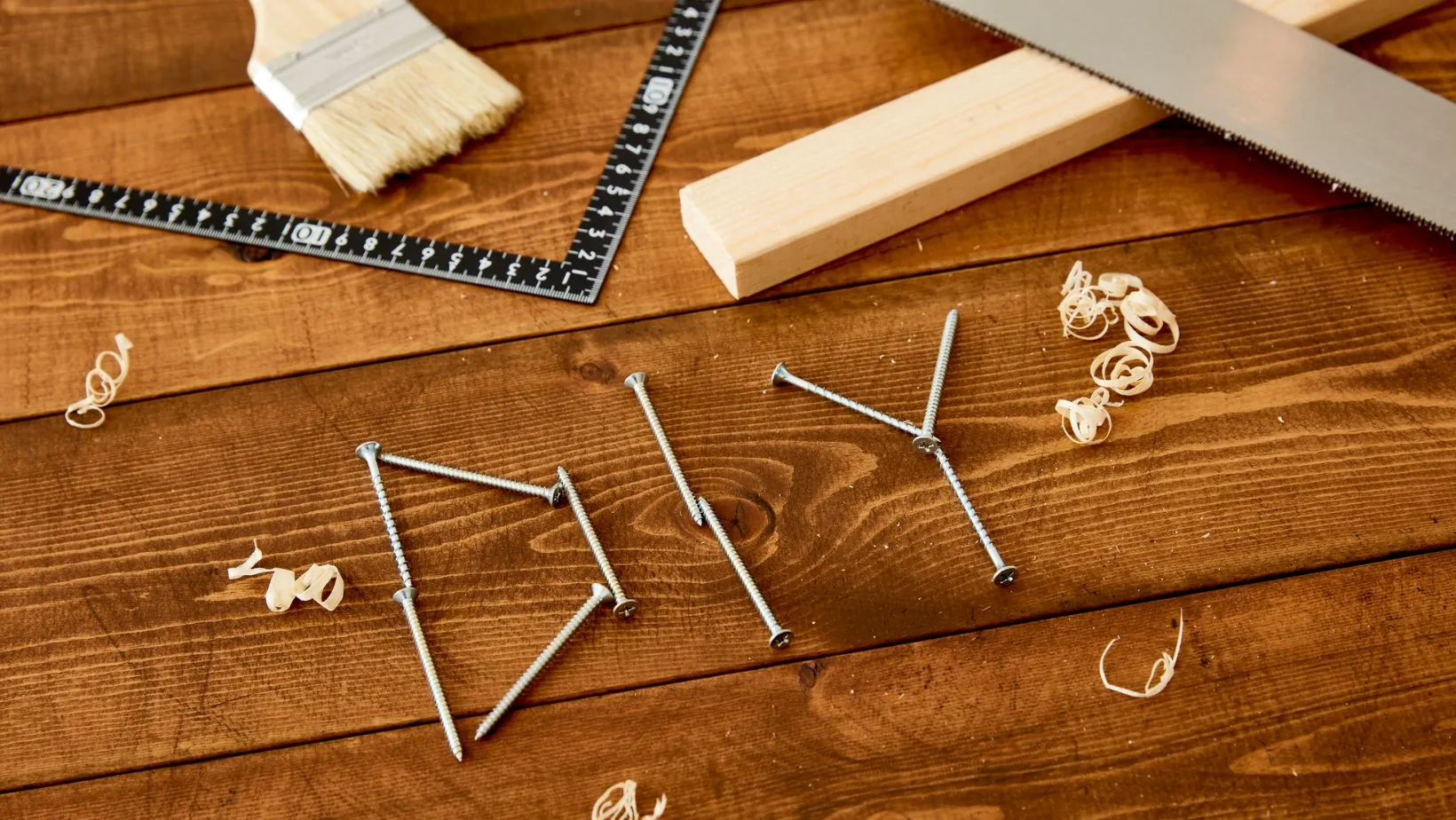Table of Contents
ToggleWood DIY projects are like the Swiss Army knives of home improvement—versatile, fun, and slightly dangerous if you don’t know what you’re doing. Whether it’s building a rustic bookshelf or crafting a chic coffee table, working with wood can transform any space and unleash creativity. Plus, who wouldn’t want to impress friends with their newfound carpentry skills?
Overview of Wood DIY Projects
Wood DIY projects capture attention for their creative potential and versatility. Many individuals gravitate towards building functional items, such as shelves, furniture, and decorative pieces. Crafting a rustic bookshelf adds charm to a living room, while a chic coffee table becomes a centerpiece in any gathering space.
These projects allow for personal expression through unique designs and finishes. Various woodworking techniques, ranging from simple cuts to intricate joinery, can be employed to enhance the final product. Tools such as saws, drills, and sanders facilitate the process, making it accessible for those of all skill levels.
Safety remains paramount when working with wood. Wearing protective gear, including goggles and gloves, minimizes the risk of injury. Proper technique in handling tools reduces accidents, ensuring a rewarding experience for DIY enthusiasts.
Plans for woodworking projects are often readily available online, offering step-by-step instructions. From beginner to advanced levels, these resources provide guidance and inspiration. Individuals can select projects that match their skill set and available materials.
Sustainability also plays a significant role in wood DIY. Reclaimed wood can contribute to eco-friendly practices, reducing waste and promoting responsible craftsmanship. Incorporating salvaged materials encourages creativity while supporting environmental consciousness.
Overall, wood DIY projects engage people in crafting beautiful and functional items. Enjoyment in the process, along with the satisfaction of creating something unique, makes woodworking a fulfilling hobby. Enhanced skills and creativity shine through in the finished pieces, impressing friends and family alike.
Benefits of Wood DIY Projects
Wood DIY projects provide numerous advantages, enriching the crafting experience while enhancing living spaces.
Cost-Effective Home Improvement
Creating with wood significantly reduces expenses compared to purchasing ready-made items. Building custom furniture or decor can save individuals up to 50% off retail prices. Simple materials, like plywood or reclaimed wood, cost less and offer unique aesthetics. Individuals can tailor projects to their specific needs, avoiding unnecessary expenses for features they won’t use. Efficiency shines through as DIY enthusiasts make personal choices on design and function, ensuring satisfaction while maintaining budget control. Choices made during these projects often lead to better quality items, enhancing home value without overspending.
Environmental Impact
Wood DIY projects contribute positively to the environment through sustainable practices. Using reclaimed wood not only reduces waste but also decreases the demand for new timber. Eco-friendly options, such as sourcing local wood, further promote sustainability while minimizing carbon footprints. Crafting from recycled materials promotes a culture of reuse, encouraging creativity. Selecting non-toxic finishes and adhesives can enhance indoor air quality, benefiting health and well-being. Engaging in wood projects fosters awareness about environmental conservation while creating beautiful, functional items for homes.
Popular Types of Wood DIY Projects
Various wood DIY projects capture interest and imagination. These projects not only spruce up living spaces but also allow for personal creativity.
Furniture Restoration
Furniture restoration stands out as a popular type of wood DIY project. Reviving old pieces can save money and reduce waste. Sanding, painting, or staining can breathe new life into worn-out furniture. Many find that unique character emerges from an restored item. Online resources offer guidelines for techniques and finishes. This project lets individuals create custom, one-of-a-kind pieces that fit their style.
Garden Projects
Garden projects present another exciting area for wood DIY enthusiasts. Raised garden beds enhance vegetable growth while keeping plants organized. Trellises support climbing plants and add visual interest. Birdhouses offer both function and decor, attracting wildlife to gardens. Plans for these projects can often be found in gardening magazines or websites. These outdoor enhancements encourage creativity while connecting individuals with nature.
Home Decor
Home decor projects showcase the versatility of wood in interior design. Wall art, shelves, and picture frames provide excellent opportunities for customization. Individuals can use various woodworking techniques to create stunning pieces that reflect their taste. Rustic wood signs can enhance a living space’s charm. Incorporating functional decor like coat racks or key holders improves organization while adding style. Each project brings personal flair to homes, transforming ordinary spaces into inviting ones.
Tools and Materials Needed
Wood DIY projects require specific tools and materials to ensure quality results. Proper selection enhances effectiveness and safety throughout the crafting process.
Essential Hand Tools
Hand tools play a crucial role in woodworking projects. Saws, including circular and miter types, facilitate precise cuts for various applications. Chisels allow for shaping and detailing wood pieces. Clamps secure materials together during assembly, ensuring stability. Sandpaper smoothens surfaces for a finished look. A measuring tape or square ensures accuracy, while a utility knife serves for quick adjustments. Each tool contributes to efficiency and quality in the crafting process.
Types of Wood
Choosing the right type of wood significantly impacts project success. Pine is often favored for its affordability and ease of use, making it ideal for beginners. Oak, known for its durability, provides a strong base for furniture projects. Plywood, a versatile option, works well for cabinets and shelving. Hardwoods like cherry or walnut add elegance to home decor items due to their rich colors and textures. Reclaimed wood promotes sustainability and adds character to creations, making it an attractive choice for eco-conscious builders.
Tips for Successful Wood DIY Projects
Wood DIY projects require careful consideration and planning. Individuals should create detailed designs that outline dimensions and features before starting. Sketching designs or using software helps visualize the final product. Assessing the space for which the project is intended can ensure a better fit and function.
Selecting appropriate wood types plays a pivotal role in project success. Pine suits beginners for its affordability and easy workability. Oak offers durability for furniture, while plywood provides versatility for cabinetry. Utilizing reclaimed wood not only enhances sustainability but adds unique character.
Planning and Design
Effective planning enables smoother execution of wood projects. Start with a clear design to outline project dimensions and assembly techniques. Creating a materials list avoids unexpected trips to the hardware store. Visualizing the final product through sketches aids in identifying potential design improvements. Calculating material quantities helps reduce waste and unnecessary expenses. Considering the final location of the project ensures it fits seamlessly within the existing space.
Safety Precautions
Prioritizing safety significantly impacts the DIY experience. Wearing proper protective gear, such as safety glasses and dust masks, minimizes exposure to wood particles and debris. Using ear protection while operating loud tools prevents hearing damage. Ensuring tools are well-maintained and used correctly reduces the risk of accidents. Storing tools safely when not in use prevents injuries. Keeping a first-aid kit accessible provides peace of mind during the project. Following guidelines for each tool helps maintain a safe working environment and fosters confidence in crafting.
Wood DIY projects offer a unique blend of creativity and functionality that can transform any space. By engaging in these projects, individuals not only enhance their homes but also cultivate a sense of accomplishment. The versatility of wood allows for endless possibilities, from furniture restoration to garden enhancements.
Emphasizing safety and sustainability, these projects encourage responsible crafting while showcasing personal style. With the right tools and materials, anyone can embark on a woodworking journey that reflects their vision. Ultimately, wood DIY projects serve as a rewarding outlet for creativity and a meaningful way to improve living spaces.







